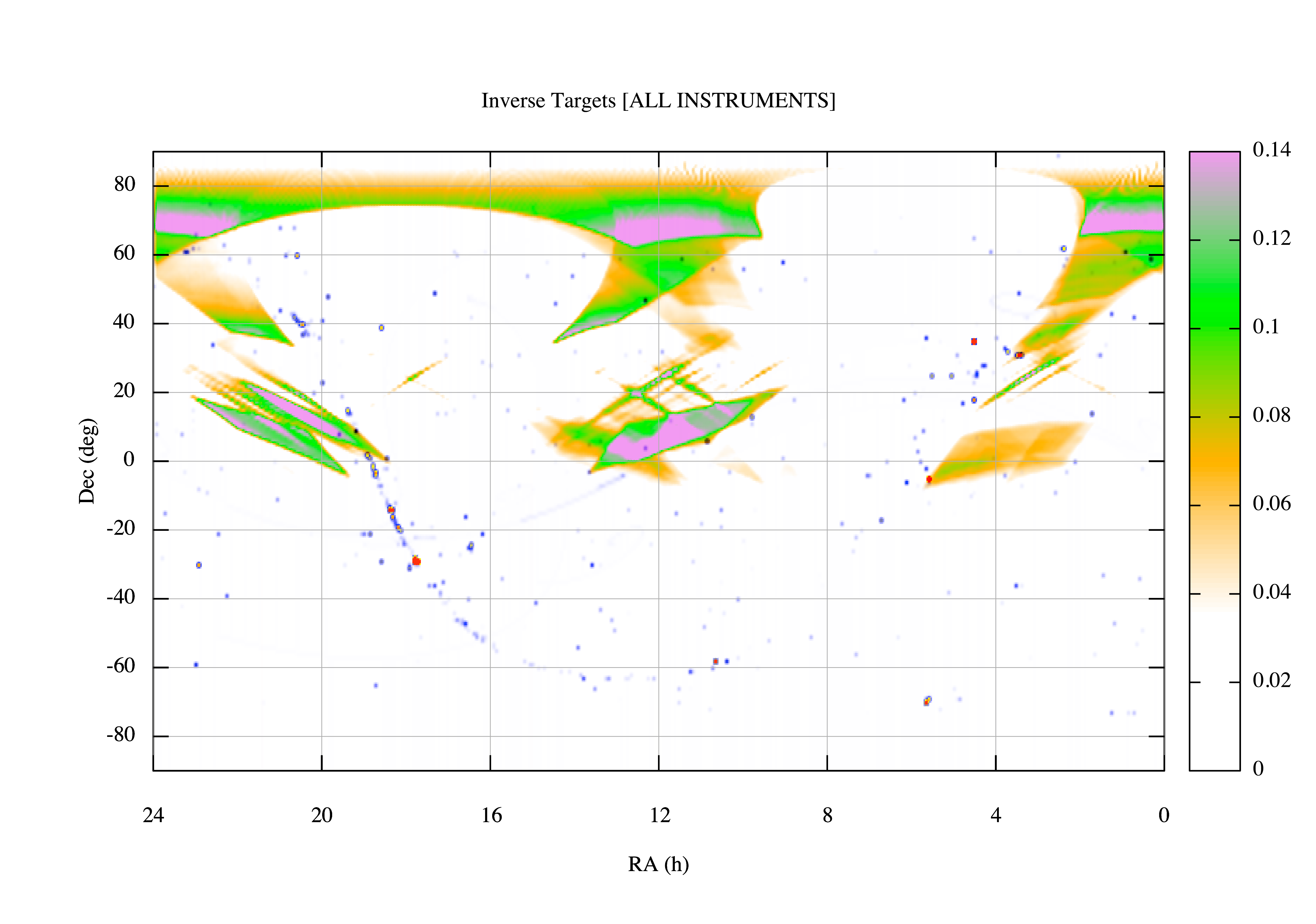
The shaded regions show the complementary sky positions for all instruments combined. The units of the color scale are arbitrary, and show the relative "flight planning value" for the given location in the sky. The points represent accepted Cycle 4 and Cycle 5 targets.
Proposal selection is based on scientific merit, however, targets in the complementary regions will have a higher chance of being awarded observing time. Survey proposals with targets in these regions will be particularly useful for flight planning efficiency.
Maps showing the complementary sky positions for each of the instruments were generated using all the approved Cycle 4 and Cycle 5 target pools (except the 60 hours spent on the galaxy M51) and planned instrument series, along with some simplifying assumptions regarding the flight plans. The plot shown on this page is the combined complementary sky positions map for all instruments (except FPI+). The links below may be used to obtain the ones for each of the individual instruments.
complementary_ALL.png
complementary_EXES.png
complementary_FIFI-LS.png
complementary_FLITECAM.png
complementary_FORCAST.png
complementary_GREAT.png
complementary_HAWC.png
All SOFIA observing flights, except those during deployments, take-off from, and return to Palmdale. The typical flight is overnight, and lasts about 10 hours. The telescope on SOFIA is mounted on the port side of the aircraft; therefore, observations of setting targets that require a northbound flight leg will need to be balanced with rising targets on the southbound legs. The most sought after infrared targets tend to be concentrated in a few areas in the sky such as the inner Galactic plane and Orion, and therefore approved targets for each cycle are highly anisotropically distributed on the sky. The distribution of targets along with SOFIA flight path restrictions imply that building efficient flight plans around the highest ranked targets is very difficult. Well justified (and suitably highly ranked) observations in complementary sky regions will help alleviate this problem.